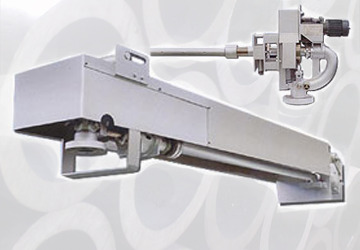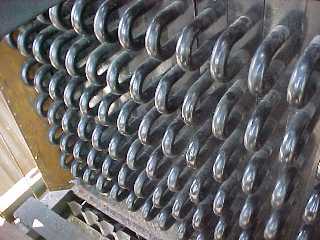
The Ultimate Guide to Sootblower Replacement Parts
Sootblowers are essential components of industrial boilers. Just like the name implies, they can remove soot and ash buildup from a boiler’s heat exchange surfaces.
Home » The Importance of Boiler Feed Pumps: The Lifeline of Steam Generation
Boiler pumps are a critical cornerstone of boiler systems. Their significance lies in ensuring uninterrupted steam generation, powering various industrial processes and heating facilities, and driving production lines.
Let’s delve deeper into the functions, significance, and nuances surrounding boiler feed pumps.
A boiler feed pump is a high-pressure centrifugal pump tasked with delivering feed water to the boiler drum or steam generator. At its core, a boiler feed pump’s primary function is to maintain the necessary water level within the boiler and replenish the water consumed during the steam generation process. This dynamic equilibrium ensures a seamless steam production cycle, essential for keeping industrial operations moving.
Here’s why boiler feed bumps are so indispensable.
These pumps efficiently deliver water at high-heat conditions, optimizing a boiler’s performance and energy efficiency and thereby reducing operational costs.
Maintaining proper water levels is paramount for preventing boiler damage from overheating or dry firing. Boiler feed pumps play a pivotal role in maintaining consistent water levels. This helps safeguard the boiler system’s integrity and prolong its operational lifespan.
Boiler downtime translates to lost productivity and revenue. A feed pump boiler enables uninterrupted steam production by consistently supplying the necessary feed water, keeping the whole facility more productive.
In modern facilities and older systems, boiler feed pumps display incredible versatility. They can tolerate a wide range of operating conditions and discharge pressures. A boiler feed pump can be designed to handle almost any situation, which is part of what makes them such workhorses.
These high-pressure centrifugal pumps handle feed water at temperatures in the range of 320°F to 410°F (160°C to 210°C), and sometimes higher.
The pumps are usually multistage, and the number of stages depends on the discharge pressure required. This can be anywhere from 200 bar (2,900 psi) to 400 bar (5,800 psi) or more.
Boiler feed bumps are made of corrosion-resistant materials like martensitic stainless steel or chrome steel. This is necessary for the pumps to be able to tolerate harsh operation conditions and the feed water’s chemical composition.
Electric motors or high-speed turbines drive the pumps, depending on the situation. (Electric motors are usually used for part-load or auxiliary feed pumps.)
For a reliable and efficient boiler setup, boiler feed pumps must be carefully selected and properly sized. Otherwise, you risk losing efficacy or experiencing inefficient energy usage. When choosing a boiler feed pump, you’ll need to know the capacity, discharge pressure, pump driver capabilities, and the conditions under which the pump will operate.
Every tool has ups and downs – here’s what to know about boiler feed pumps.
Adequately sized and selected boiler feed pumps enable reliable operation, which helps avoid costly downtime and production losses.
By delivering feed water at optimal conditions, these pumps make systems more energy efficient, lowering operational costs and environmental impacts.
Boiler feed pumps can be used in varied industrial settings, from power generation to heating systems.
Consistent water levels maintained by boiler feed pumps help decrease the risk of boiler accidents, which creates a safer workplace for all.
Like sophisticated equipment, boiler feed pumps require diligent maintenance to maximize service life. Tasks such as bearing lubrication, seal replacements, and performance monitoring are essential to minimize disruptions and ensure longevity.
High-pressure centrifugal pumps, such as boiler feed pumps, require initial investment costs. However, these upfront expenses are usually outweighed by long-term operational efficiency and reliability benefits.
While boiler feed pumps’ foundational aspects highlight their importance, a deeper understanding of their nuances enhances their effectiveness even more.
Factors such as pump capacity, discharge pressure, driver capabilities, and operating conditions play crucial roles in their selection and performance optimization. Bearing lubrication, seal replacements, performance monitoring, and other forms of routine maintenance are imperative to maximize their service life and minimize system disruptions.
Industrial Boilers America provides premium-grade industrial boiler feed bumps for customers worldwide. With our advanced inspection and testing processes, we ensure that we supply high-endurance feed that can handle the most challenging conditions and rise to the occasion of your facility’s needs.
With over 20+ years of industry experience, we can help you make the most cost-effective and efficient decision for your facility. Contact us today to get started on choosing the best equipment for your facility.
At Industrial Boilers America, we lead in providing the development, licensing, and deployment of Industrial Power plants. We partner with other leaders of communities and governments to foster long-term relationships that create sustainable energy, jobs, and social responsibility. Our philosophy that sustainability should be rooted in the betterment of the ecosystem rather than profit allows us to provide services that will enable our partners to reinvest in themselves, resulting in a sustainable community.

Sootblowers are essential components of industrial boilers. Just like the name implies, they can remove soot and ash buildup from a boiler’s heat exchange surfaces.

Boilers provide essential heating and steam generation for industries ranging from power production to manufacturing. To ensure safety, efficiency, and functionality, rely heavily on sophisticated

Industrial boilers are essential for keeping the world moving. Understanding the critical industrial boiler parts ensures efficient operation, safety, and longevity of equipment. Main Industrial